Higher classification Domestic duck | Rank Breed | |
 | ||
Scientific name Anas platyrhynchos domesticus Similar Orpington Duck, Welsh Harlequin, Ancona duck, Shetland duck, Cayuga duck | ||
Black magpie ducks
The Magpie duck is a lightweight breed of domesticated duck. Developed in the early 20th century, they are raised as general purpose ducks, since they have attractive markings, and are highly productive layers of large eggs.
Contents
- Black magpie ducks
- Magpie ducks at 6 weeks
- Characteristics
- Temperament
- Feeding
- Use as food by humans
- Breed history
- References
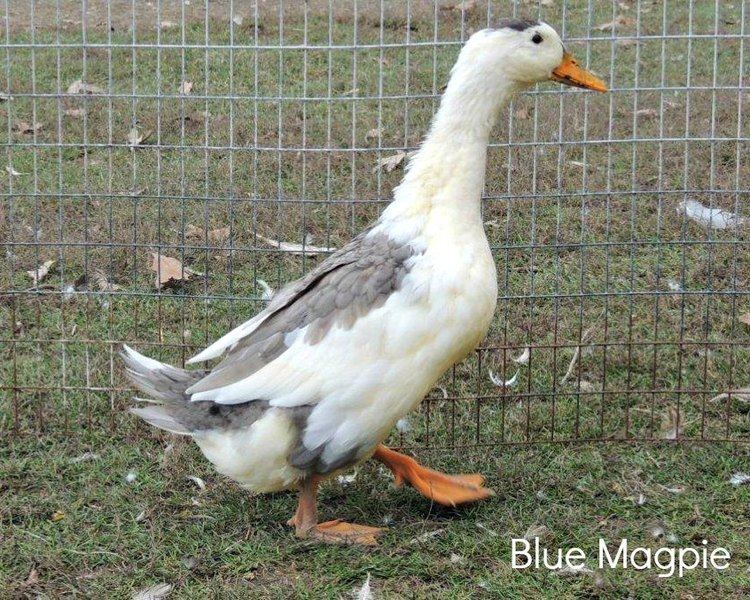
Magpie ducks at 6 weeks
Characteristics
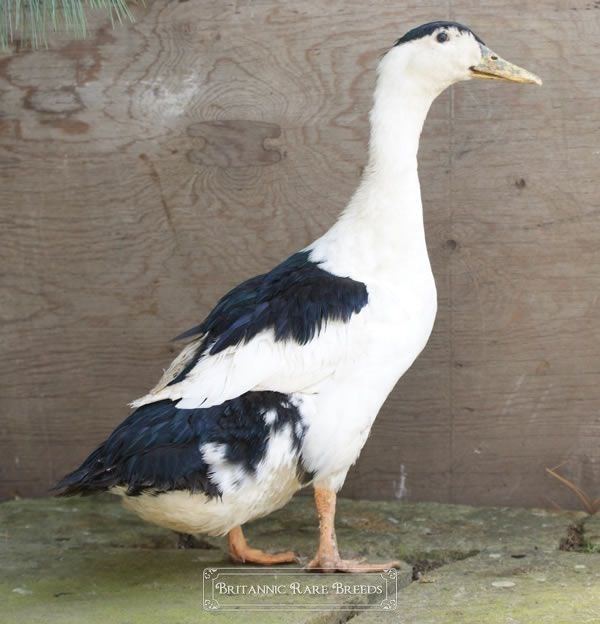
Named for its distinctive black and white plumage, reminiscent of the colouration of the European magpie, the typical example of the species is predominantly white with two large black areas on the back and top of the head. As the bird ages the black cap will normally begin to be flecked with white and may eventually become completely white. Blue, silver and chocolate which is very rare, are also color varieties that Magpies can come in. However, blue is the only other variety besides black that is recognized by the American Poultry Association. Similar in shape to the Khaki Campbell, but more substantial, the Magpie is moderately streamlined with a somewhat upright carriage that suggests Indian Runner duck in its ancestral bloodline. The bill is yellow or orange, but turns green in older birds. The legs and feet are orange but may be mottled. The chest is rounded and the neck moderately long. Males have, when fully feathered, curled feathers on the tail. Females have, when fully feathered, straight feathers on the tail. Males weigh around 2.7 kg (6.0 lb) on average, and females around 2.5 kg (5 1⁄2 lb), although the American standard specifies 1 pound (0.45 kg) lower for each. They lay between 220–290 large white eggs annually. They are a hardy variety, active foragers, and live for approximately 9 to 12 years. While generally at home on land and not capable of sustained flight, they can propel themselves over a 2–3-foot wall if startled.
Temperament
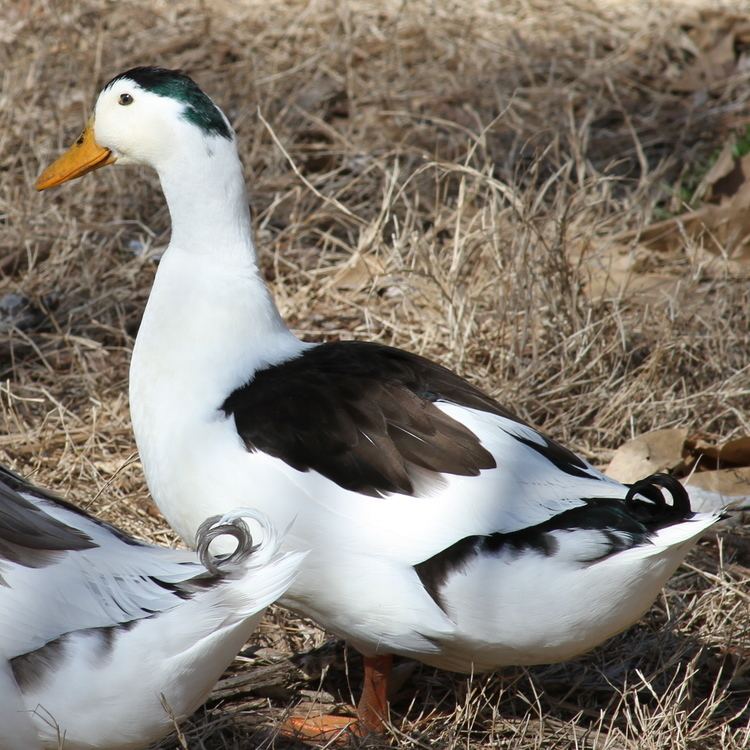
Magpie ducks are often a docile and calm breed, especially when handled regularly. Individuals can be high-strung. Regular handling from a young age will ensure your Magpie ducks are friendly and easy to manage. An agitated Magpie duck tends to stand more upright, while a relaxed duck is more horizontal.
Feeding
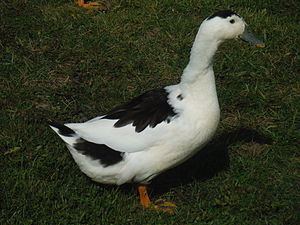
Magpies will graze and hunt for a sizable portion of their feed from grass, seeds, insects, and aquatic life. They eagerly search for and consume slugs, snails, and insects; so much so that keepers of large livestock find that these ducks are effective at eliminating liver fluke infestations.
Use as food by humans

Their meat is of gourmet quality. Carcasses will pick cleanly because of their light colored under-bellies, and each bird will yield portions suitable for two to three people.
Breed history
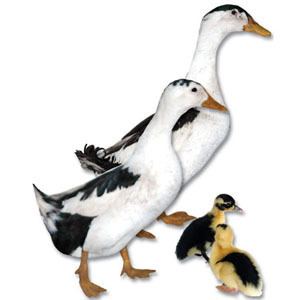
The Magpie duck is believed to have originated in the early 1900s, having been developed by Oliver Drake and M.C. Gower-Williams in Wales. It is possible that they were selectively bred from the Belgian Huttegem, an old breed that was popular in the duck-raising area north of Brussels in the 19th century. Descriptions of the Huttegem are remarkably similar to the modern Magpie duck, and old pictures show many of the features of the Magpie including the coloring. The Magpie duck was imported to the United States from Great Britain in 1963, but was not widely kept. It was admitted to the American Standard of Perfection in 1977, but it did not become popular in the United States until 1984. It is still one of the rarer varieties of domesticated duck. Color patterning of ducklings will not change as they develop to adults, so breeders can select good specimens for breeding while using other ducklings as utility birds.
ALBC's 2000 census of domestic waterfowl in North America found only 126 breeding Magpie. While seven people reported breeding Magpie, only one primary breeding flock with 50 or more breeding birds existed. There is a critical need for more conservation breeders of Magpie ducks. Their excellent laying ability, gourmet quality meat, and excellent foraging abilities make them a great addition to any small farmstead or backyard producer's flock.
